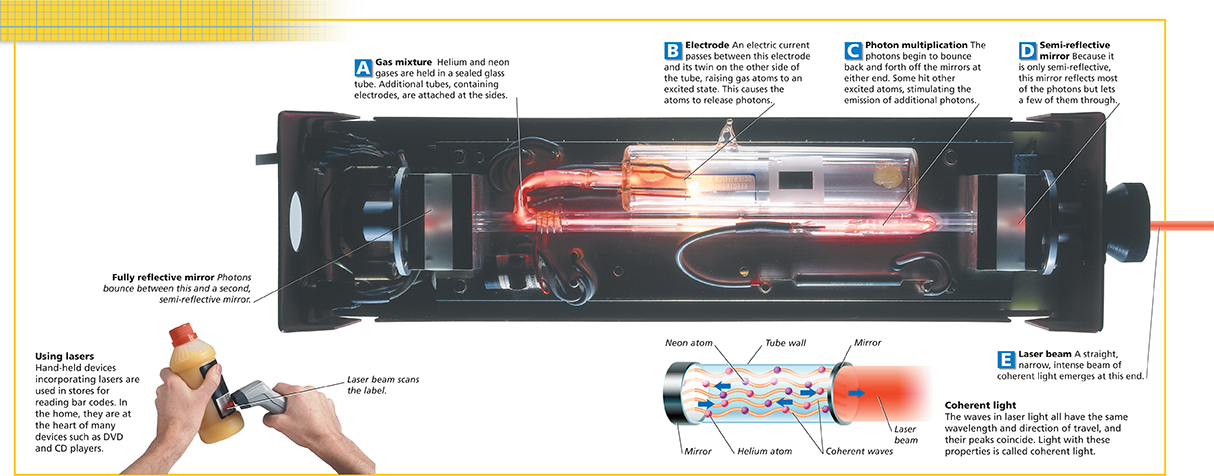Laser Light
A laser is a device that generates a beam of coherent light. The word laser stands for light amplification by stimulated emission of radiation.  Laser light is emitted when excited atoms of a solid, liquid, or gas emit photons. Light in which waves have the same wavelength, and the crests and troughs are lined up, is coherent light. A beam of coherent light doesn't spread out significantly from its source, so the light has a relatively constant intensity. The energy it carries may be focused on a small area.
Laser light is emitted when excited atoms of a solid, liquid, or gas emit photons. Light in which waves have the same wavelength, and the crests and troughs are lined up, is coherent light. A beam of coherent light doesn't spread out significantly from its source, so the light has a relatively constant intensity. The energy it carries may be focused on a small area.
Lasers can cut through metals and make computer chips. Surgeons use lasers to cut or repair damaged tissue. Lasers carry information through optical fibers. Laser light is used to measure distances precisely.
 HOW It Works
HOW It Works
Gas Laser
Laser light is produced by exciting the atoms of a solid, liquid, or gas so that they emit photons. Some of these photons collide with other excited atoms and stimulate the emission of more photons. Eventually some photons are released as an intense beam of light. The gas laser shown here uses a mixture of helium and neon gases. Interpreting Photographs How does a laser produce coherent light?





